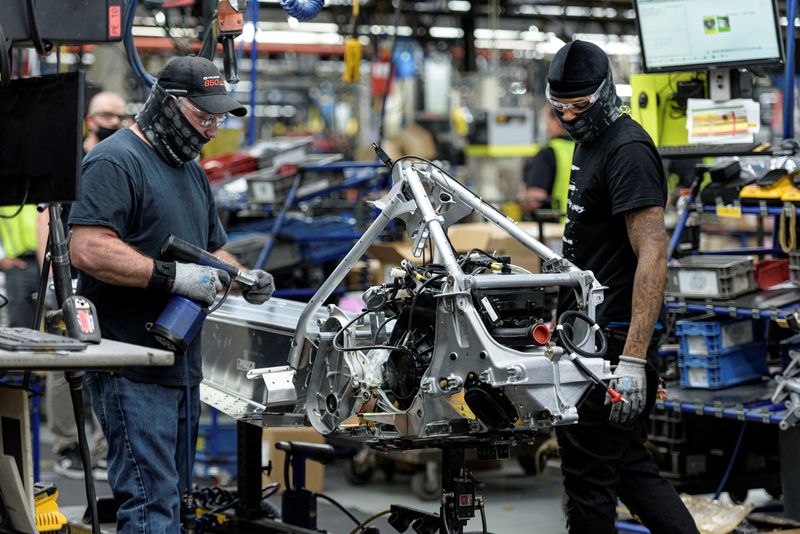(Reuters) -New orders for U.S.-manufactured goods increased more than expected in May, bucking a slew of recent data showing a softening in the economy and underscoring that demand for products remains strong even as the Federal Reserve aggressively tightens financial conditions.
The Commerce Department said on Tuesday that factory orders rose 1.6% in May after advancing 0.7% in April. Economists polled by Reuters had forecast factory orders would rise 0.5%.
Other indicators have shown less resilience. A survey on Friday showed the Institute for Supply Management's national factory activity index contracted for a second straight month, though an "overwhelming majority" of companies indicated they were hiring.
That followed moderate consumer spending growth in May along with weak housing starts, building permits and factory production.
Manufacturing accounts for 12% of the U.S. economy and is being held up by strong demand for goods even as overall spending rotates more toward the services sector. The U.S central bank is seeking to cool demand across the economy as it tries to tamp down high inflation.
In May, there were increases in orders for primary metals, machinery and transportation equipment, among others. Orders for computers and electronic products also rose 0.5%. But orders for electrical equipment, appliances and components declined 1.0%.
Shipments of manufactured goods gained 1.8% after accelerating 0.6% in April. Inventories at factories increased 1.3%. Unfilled orders rose 0.4% in May compared to a gain of 0.5% in April.
The Commerce Department also reported that orders for non-defense capital goods excluding aircraft, which are seen as a measure of business spending plans on equipment, increased 0.6% in May instead of 0.5% as reported last month.

Shipments of these so-called core capital goods, which are used to calculate business equipment spending in the gross domestic product report, advanced 0.8% in May, the same as reported last month.
Robust business spending on equipment helped to shore up domestic demand in the first quarter, even as GDP contracted at a 1.5% annualized rate during that period.